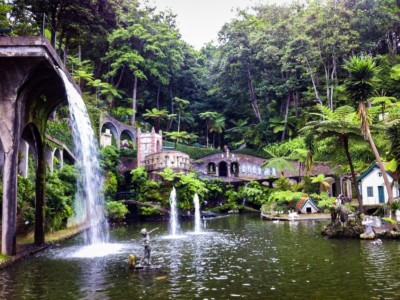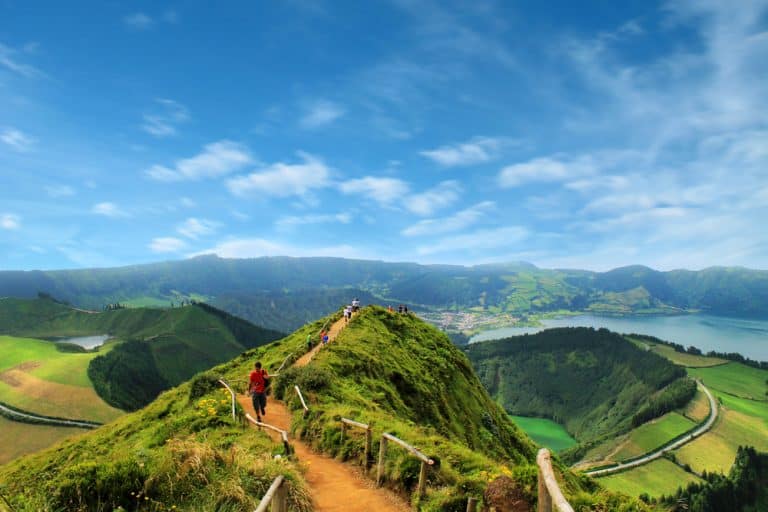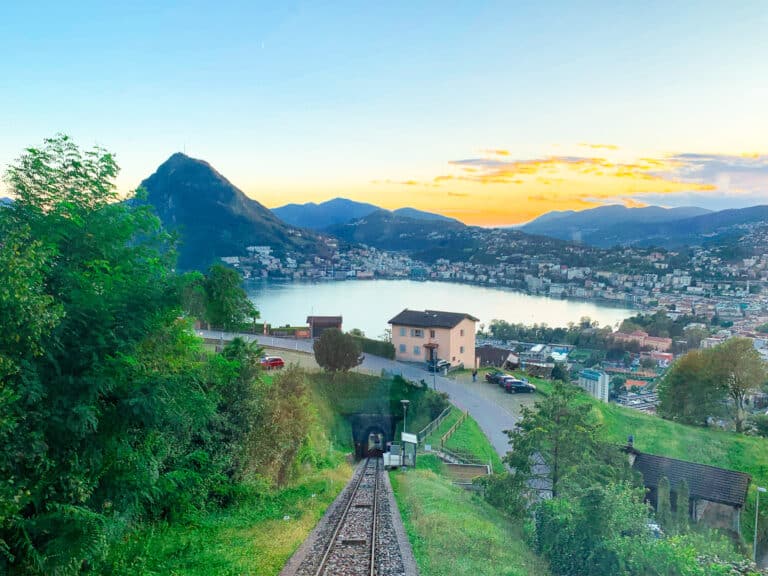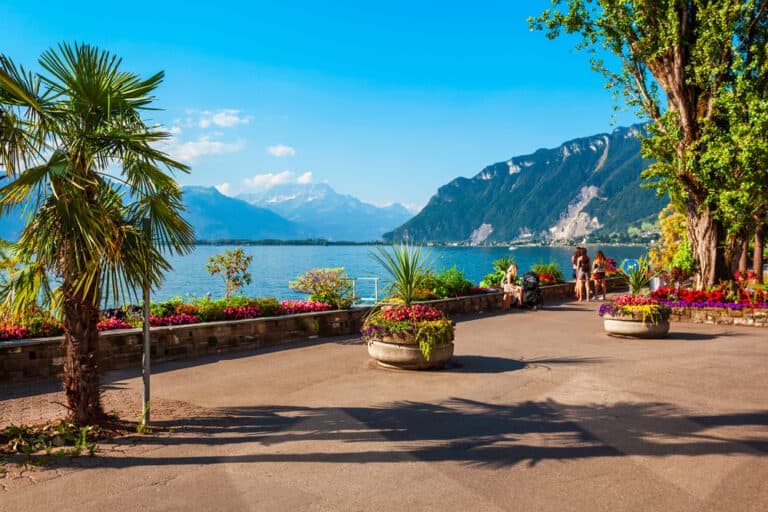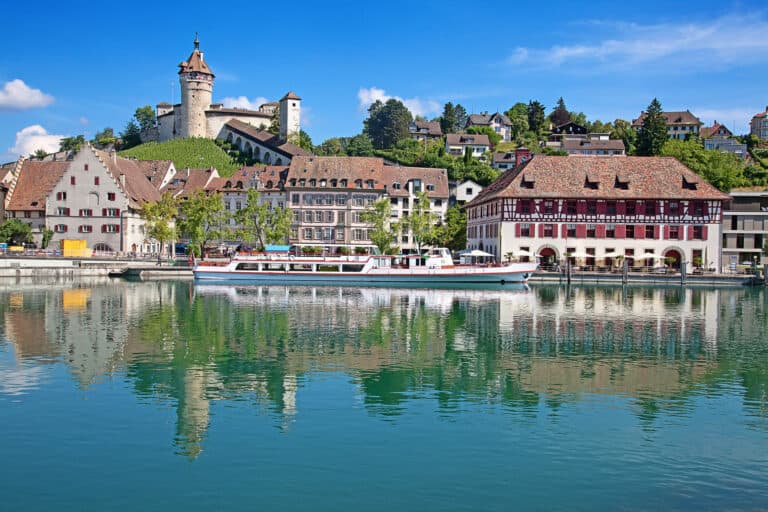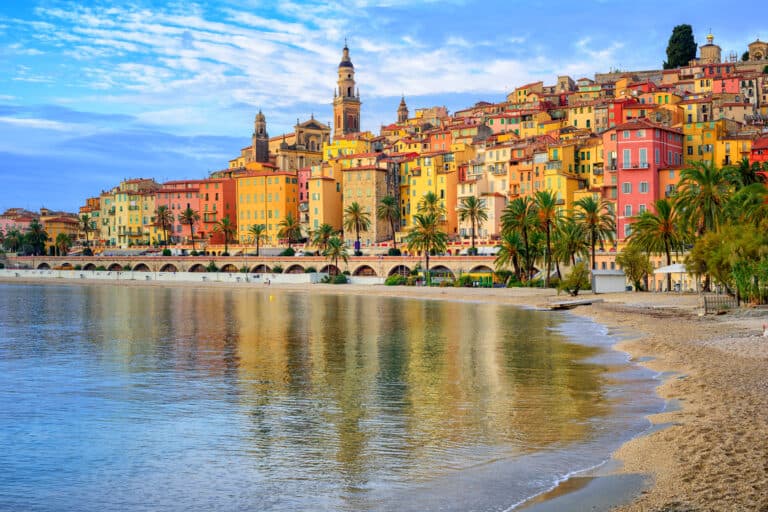2 days in Lisbon: your guide to a short break in Portugal’s capital
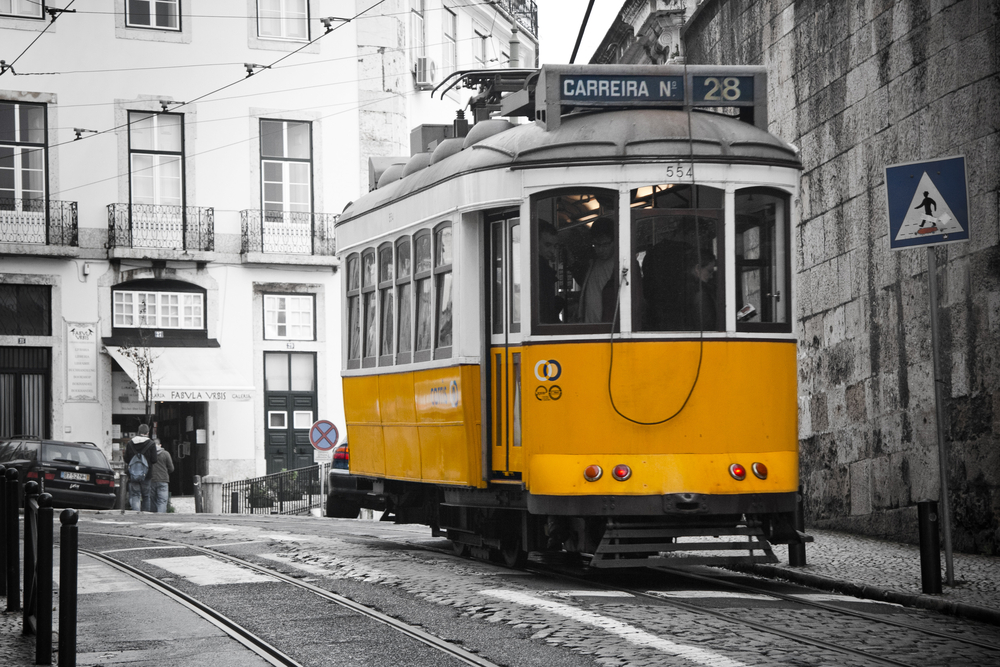
2 days in Lisbon, Portugal’s capital, is just enough time to get a feel for this captivating city.
With its imperial architectural splendour, it is a city that harks back to a bygone age.
Its elegant, tree-lined avenues and narrow cobbled side streets look almost as they did after the historic centre was rebuilt following a huge, devastating earthquake struck in 1755. The city also escaped the ravages of World War 2 that disfigured many European capitals.
The old crumbling buildings, historic neighbourhoods, and iconic rickety old yellow and white public trams, give the city a real sense of charm.
Add to this historical landmarks and excellent museums, the close proximity to the Atlantic Ocean, and the breath-taking panoramic views that come with a city built on seven hills. All of this means that you will find that spending 2 days in Lisbon will leave you wanting to return for a longer visit.
The surrounding area also offers a wealth of tempting attractions that can be enjoyed on a short day trip from Lisbon. The challenge will be fitting it all in.
Fortunately, many of Lisbon’s main attractions are located within a short distance. So with careful planning, you can make the most of 2 days in Lisbon and even fit in a quick day trip too!
This post contains affiliate links
Read on for information on the areas to focus on as part of your short trip to Lisbon.
Many of these are on the city’s hop-on-hop-off bus routes, which you can book here.
The top things to do in 2 days in Lisbon
Start in the Baixa
The best starting place when you arrive in Lisbon is the Baixa area. This is where many of the city centre’s main attractions and historical landmarks can be found or can be reached easily.
It is also the main downtown shopping district in central Lisbon, and boasts a large selection of cafes and restaurants.
Notable for being the only flat area in downtown Lisbon, the Baixa is overlooked by the steep hills of the Bairro Alto to the west and the Alfama to the east.
Both of these neighbourhoods and their associated attractions should be on your list to explore and are part of this guide to 2 days in Lisbon.
Visit the Praca Dom Pedro IV and Praca do Comercio squares
The Baixa features some impressive squares. There are two main ones to visit.
The first is the picturesque Praca Dom Pedro IV serviced by Restauradores and Rossio metro stations. You will find the neoclassical Dona Maria II National Theatre at one end.
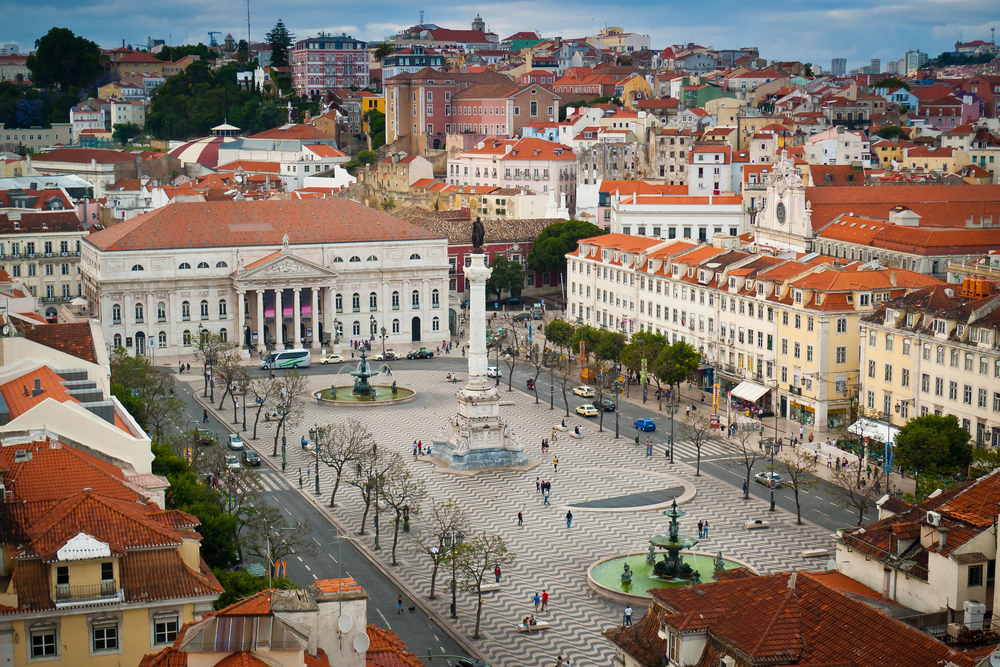
The second is the sweeping Praca do Comercio that stands on the edge of the River Tagus.
This eye-catchingly huge open expanse has a magnificent imperial archway, the Arco da Rua Augusta, at one end. In the middle is a statue of Dom Jose I astride his horse.
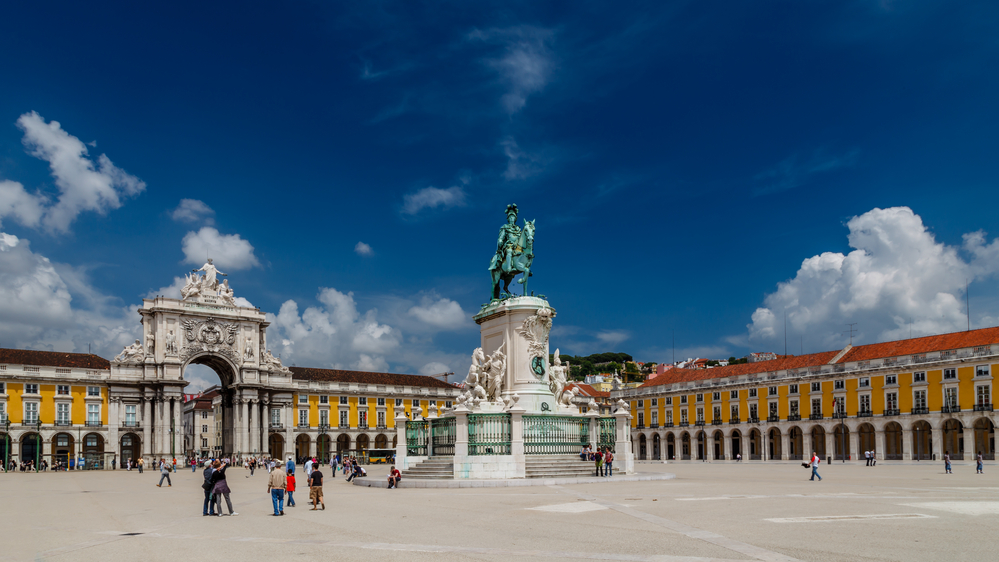
Ascend the Elevador de Santa Justa
The Baixa is characterised by a grid system of intersecting streets lined with eateries and shops. You can wander between the Praca Dom Pedro IV and Praca do Comercio squares along the pedestrianised Rua Augusta. You will pass under the imposing Arco Rua Augusta.
On the way, you’ll see one of the city’s main landmarks, the 19th-century wrought-iron structure (Elevador de Santa Justa). Take the tower’s lift up to the viewing platform for some spectacular views of central Lisbon.
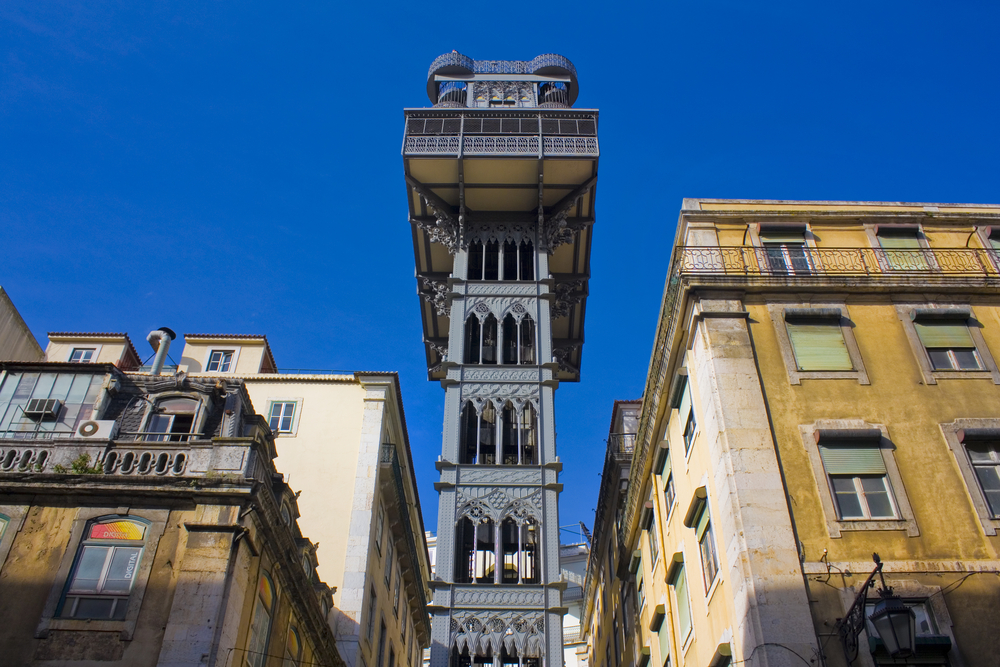
Sample a traditional Portuguese liqueur
If you fancy sampling a unique Portuguese alcoholic drink, you must try the cherry brandy called Ginjinha.
These are sold from several elaborately decorated shops in the downtown area, but you can also pick up bottles in duty-free when you leave.
Look out for the two small kiosks near the top right corner of Praca Dom Pedro IV. You’ll see groups standing outside sipping small glasses. Definitely stop off at one of these for a quick tipple if you have time.
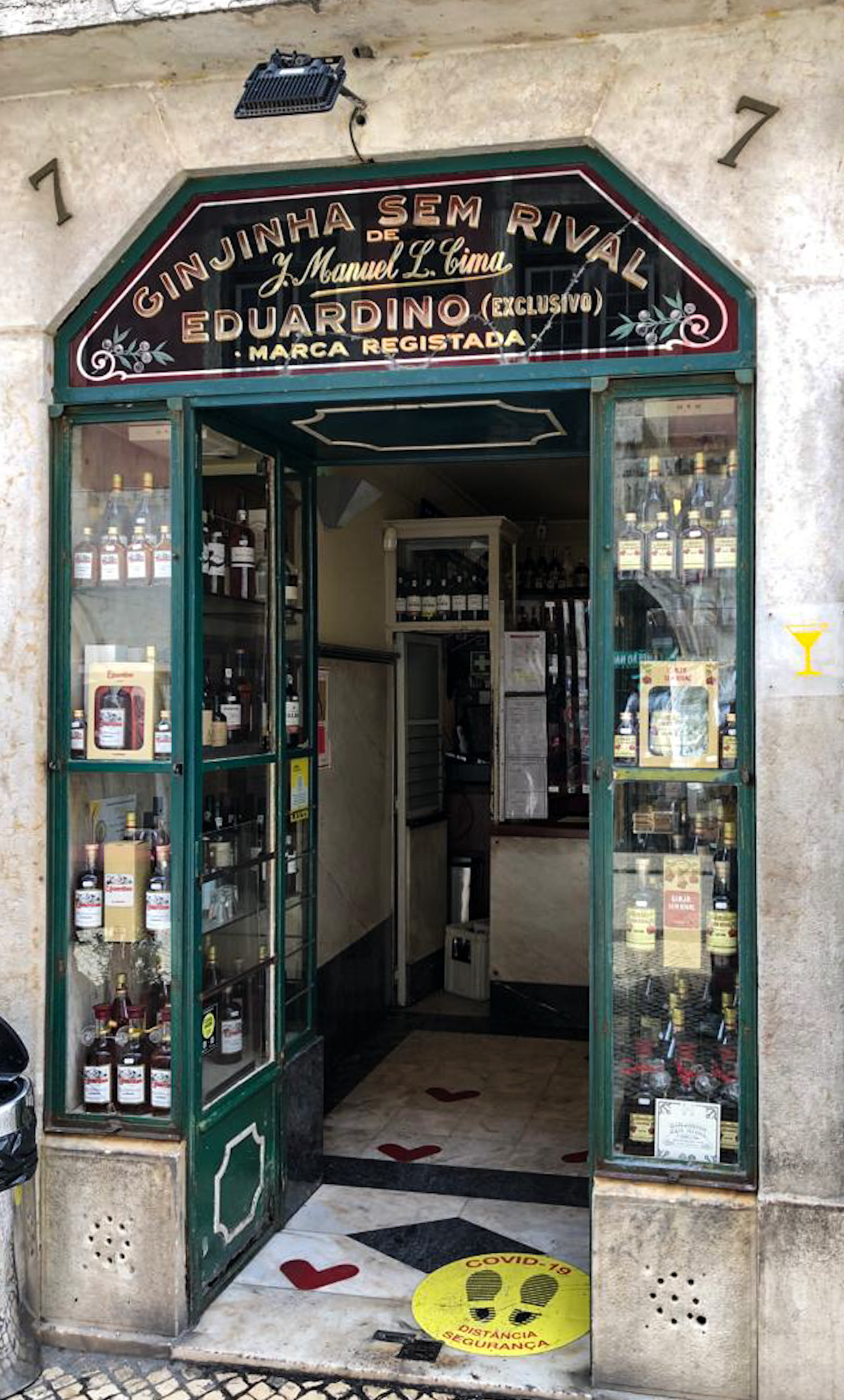
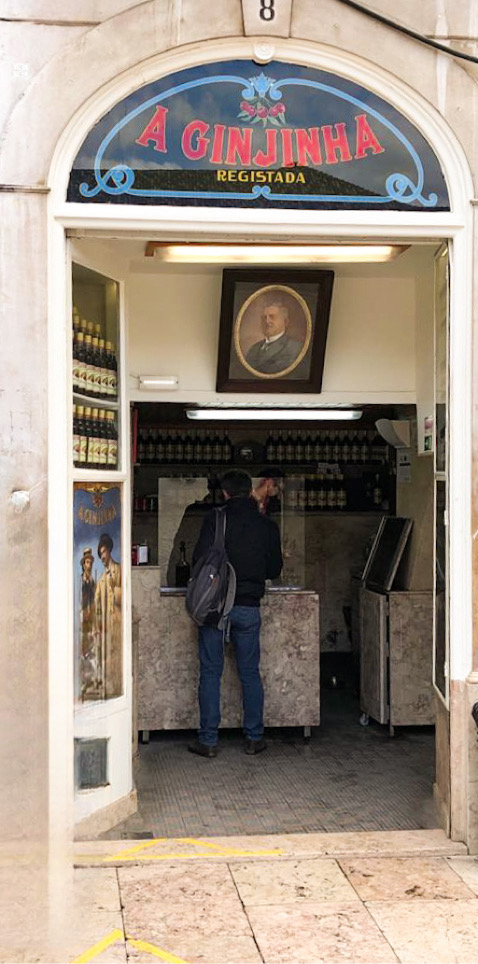
Move onto the Alfama
During your 2 days in Lisbon, you must also explore the hilly neighbourhood to the east of the Baixa called the Alfama.
This is Lisbon’s oldest district and it’s a treasure-trove to explore with its warren of narrow and steep streets with residents’ washing often hanging out to dry in the baking sun.
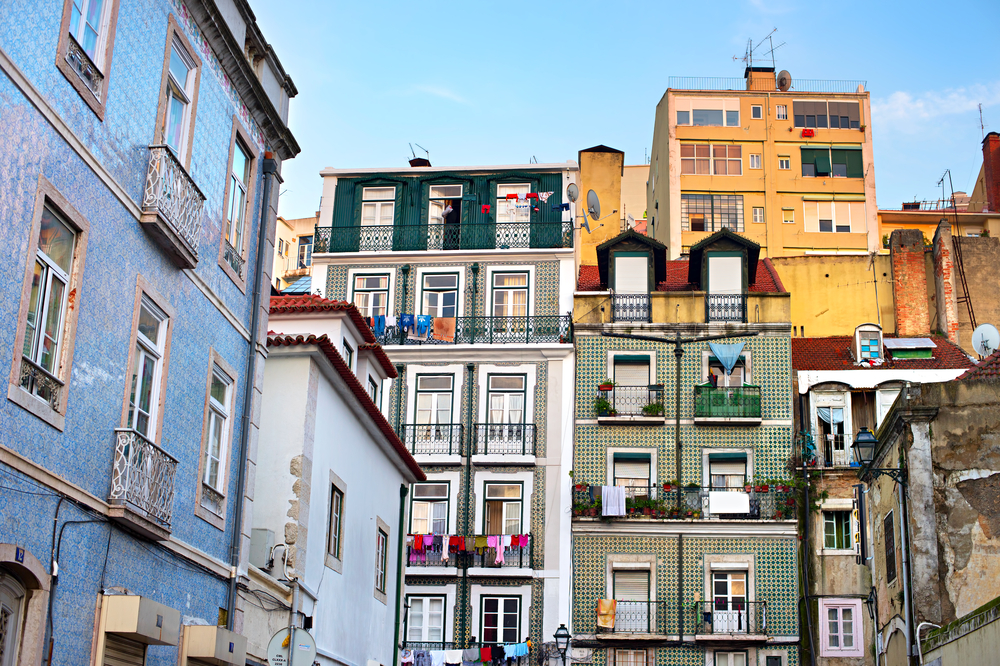
There are several landmarks in the Alfama and the surrounding area that you should include on your itinerary.
The cathedral and St. George’s Castle
One of the main landmarks in the Alfama is the cathedral, construction of which began in 1147. Its most defining features are the two imposing (and original) towers and a huge window on its façade.
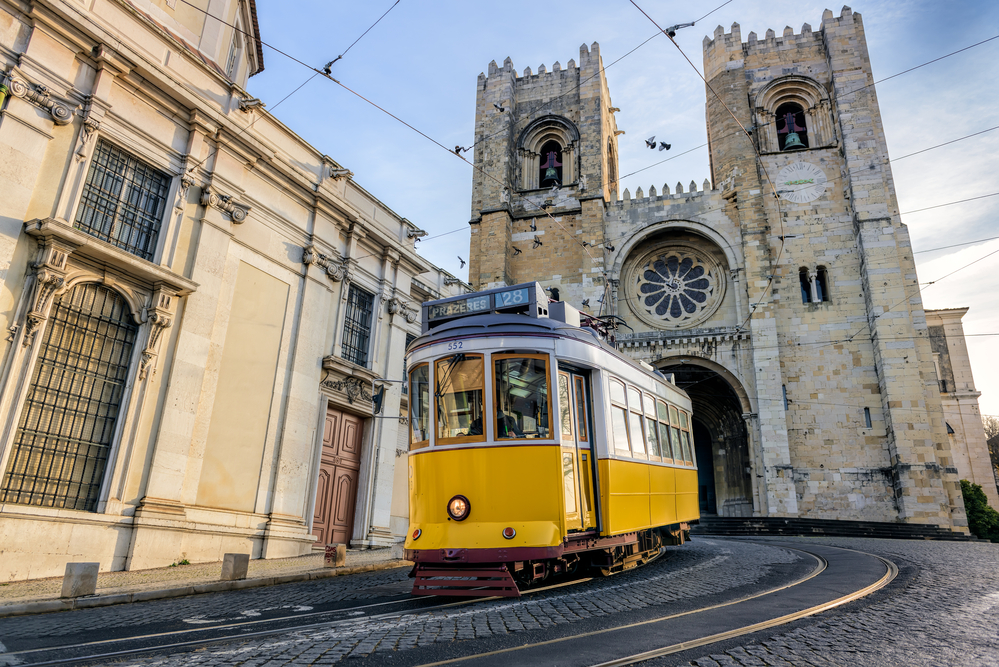
The interior is worth looking around; one notable display is the casket that holds Lisbon’s patron saint, St Vincent’s remains. And make sure you see the cathedral’s ruined cloisters.
St George’s Castle (Castelo de Sao Jorge) is also in this area and dominates the hill overlooking the Baixa. The fortification includes gardens and fountains, some surviving towers, and the ruins of a royal palace.
There is also a camera obscura which offers 360 degree views over Lisbon in real-time.
You can walk around the castle’s ramparts. From these you’ll be awarded with some of the best views of Lisbon’s centre and its main landmarks.
This includes the city’s suspension bridge (Ponte 24 de Abril) which draws comparisons with San Francisco’s Golden Gate Bridge. There is also the eye-catching Christ the King (Christo Rei) monument across the river in Almada.
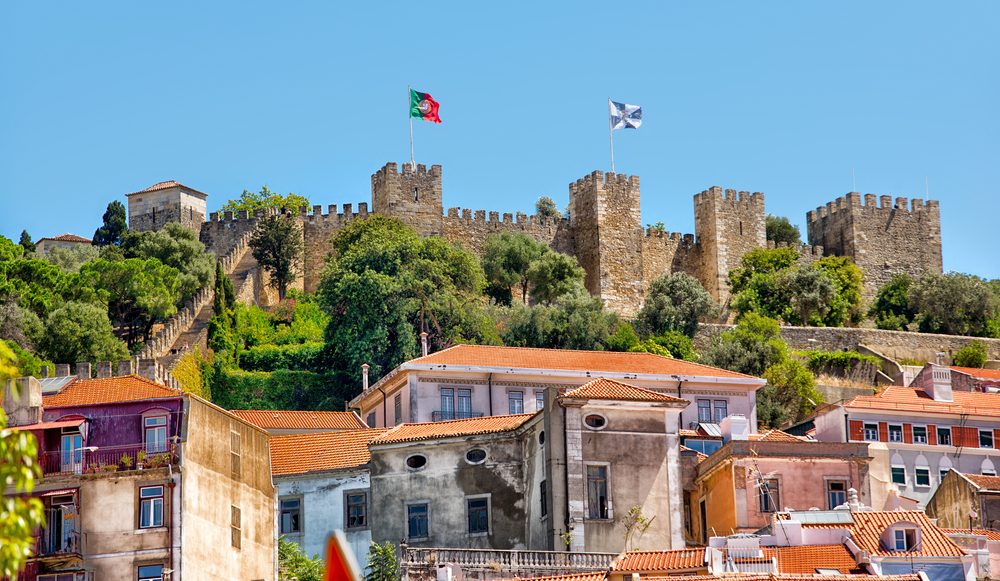
The Miradouro da Graca
There are a few superb vantage points in this part of Lisbon that are worth searching out for their incredible, panoramic views.
Most notable among these is the Miradouro da Graca in nearby Graca. This small tree-lined vantage point offers glorious views of the city centre’s skyline.
The number 28 tram
A popular tourist attraction in Lisbon is a ride on the old yellow and white 28 tram. Used by locals, this iconic tram runs between Lapa in the west and Graca in the east.

Other vintage public trams run along several routes in the city, and in recent years, one such route – the number 24 tram – has been resurrected. This runs from Cais do Sodre train station next to the River Tagus to a massive cube-like shopping centre in Amoreiras which has been restored for public use.
The 28 tram, however, offers the most spectacular ride, so it’s worth taking it in both directions and staying on for the entire journey.
When you pass through the Alfama, it’s quite an experience; at one point, the road narrows so much that you are right next to diners sitting at tables out on the street!
Stay on to the terminal in Largo da Graca and explore from here. The Miradouro da Graca is close by. Although you will need to climb a very steep street, the views that await you are worth it.
The Alfama also has some excellent places to dine out. The restaurant Chapito a Mesa on the way to the castle is a favourite spot with tourists as it has excellent panoramic views.
Explore in and around the Bairro Alto
Another must-visit neighbourhood during your 2 days in Lisbon is the Bairro Alto. This is worth exploring during the day and also after it gets dark – there are different attractions for tourists depending on which time of day you visit.
There are also some interesting places to visit in the area around the Bairro Alto and as part of your journey there.
The Praca Luis de Camoes and the Café A Brasileira
There are a number of ways you can reach the Bairro Alto from the Baixa.
One way is to walk up from Praca Dom Pedro IV via Chiado, a popular shopping district. This is a steady uphill walk, but you won’t be disappointed.
On the way, stop off at the beautifully decorated Café A Brasileira for coffee and cake. If the weather is good, sit out on the street.
Walk on another two minutes, and you enter the picturesque Praca Luis de Camoes square with its statue of the revered Portuguese poet.
The entrance to the Bairro Alto and its narrow cobbled streets is on the right-hand side of the small square; look out for Rua do Norte.
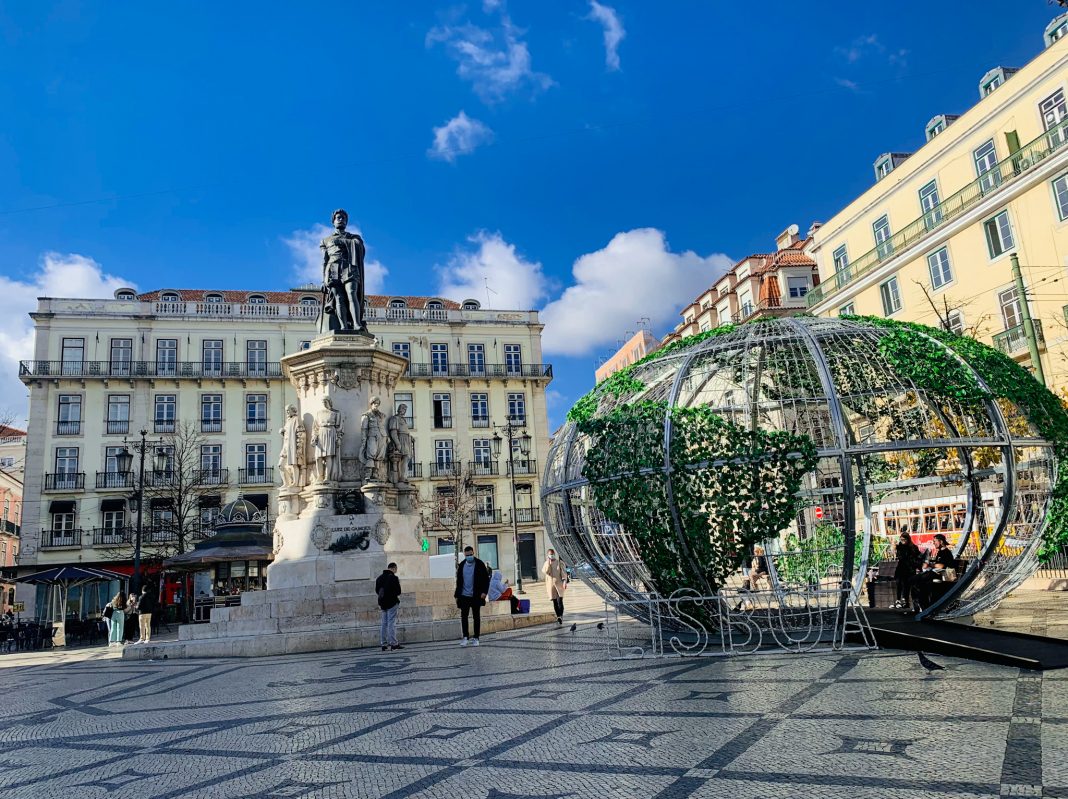
The Praca dos Restauradores and Avenida da Liberdade
Alternatively, you can reach the Bairro Alto by walking past Rossio train station. On this route, you’ll enter the impressive Praca dos Restauradores, notable for its large obelisk.
This is the start of the Palm tree-lined Avenida da Liberdade, which stretches for over 1,000 metres. The avenue was built in the 19th century and is said to have been modelled on Paris’ Champs-Elysees.
The Praca Marques de Pombal and Parque Edwardo VII
A stroll up the Avenida da Liberdade, with its elegant cafes, restaurants and theatres, will lead you up to the spectacular Praca Marques de Pombal and Parque Edwardo VII (this will take you slightly off course from your route to the Bairro Alto, but if you have the time, it is worth the diversion).
Also known as the Rotunda, Praca Marques de Pombal is a massive roundabout at the top of the Avenida da Liberdade. A monumental statue is in the centre and towers over the traffic below.
The statue is of Portugal’s Prime Minister (the first Marquis of Pombal), who governed during the 1755 earthquake. It was the Marquis who oversaw the extensive reconstruction of the Baixa.
If you have time and fancy escaping from the traffic, enter the nearby public park, Parque Eduardo VII. This is named after the English monarch who arrived in Lisbon in 1903 on a state visit.
At the very top, you’ll be awarded with stunning views of the Rotunda, the River Tagus, and beyond.
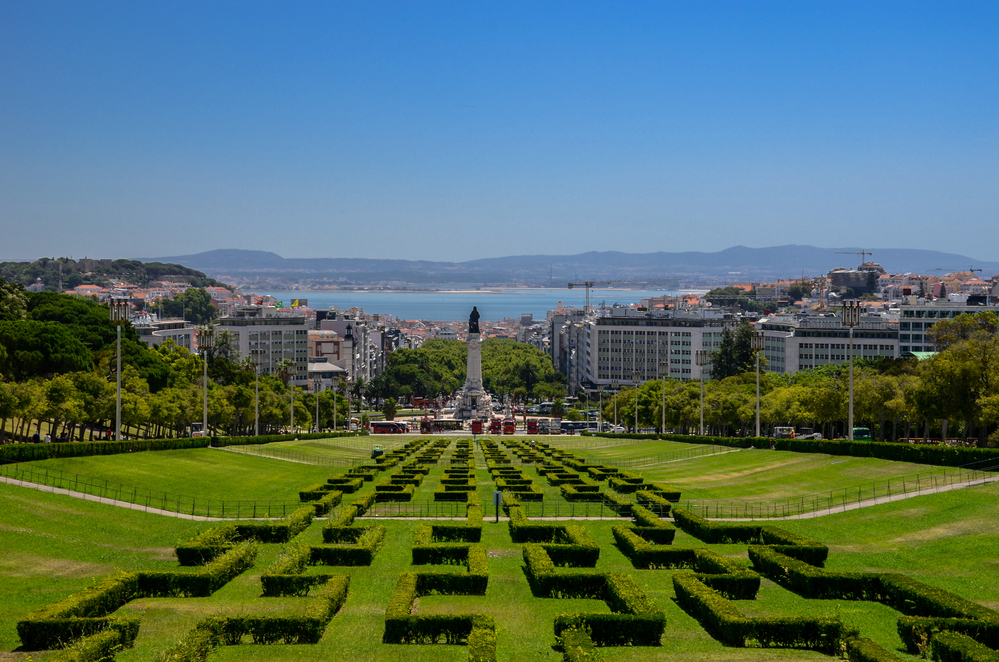
The Elevador da Gloria
On the far left-hand side of Praca dos Restauradores, you’ll see Palacio Foz, which houses the tourist office. The entrance to the iconic yellow and white Elevador da Gloria is next to it.
Take this up to the top and marvel at the panoramic views of the castle and the city from the Sao Pedro de Alcantara Miradouro terrace.
You can then enter the Bairro Alto by crossing over the zebra crossing and entering this historic neighbourhood’s maze of cobbled streets.
The Elevador da Bica and the markets
While you’re walking through the Bairro Alto during the day, you might also want to explore around Cais do Sodre train station. It’s only a short distance away, albeit down a steep hill (you can hop on the 24 tram near Praca Luis de Camoes).
Alternatively, and for another memorable experience, ask for directions to the yellow and white Elevador da Bica and take this to the bottom of the hill.
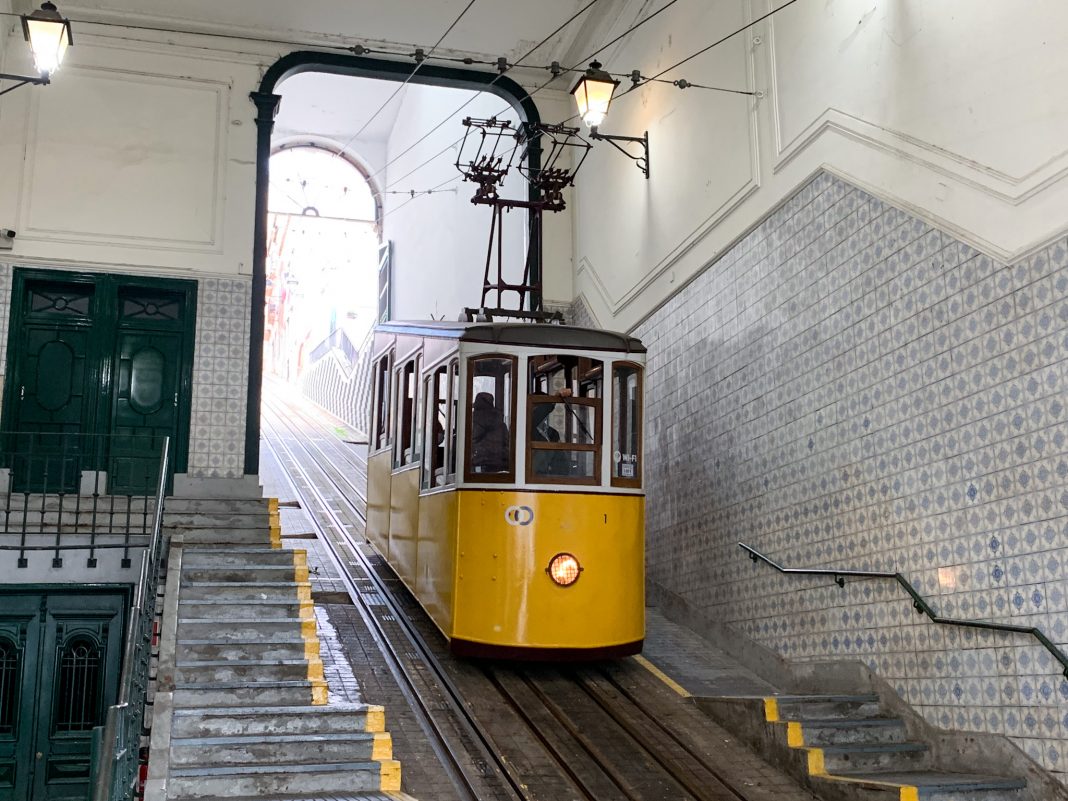
A short walk from the station exit, you’ll find the huge indoor market (Mercado da Riberia).
Inside and next to it, you’ll come across the Time Out food market. This is packed full of food outlets and is a great spot for a snack or something more substantial if you are peckish.
There is also a selection of small eateries that showcase more expensive dishes, albeit at a fraction of the price you’d pay in the restaurants. Foodies will love it here.
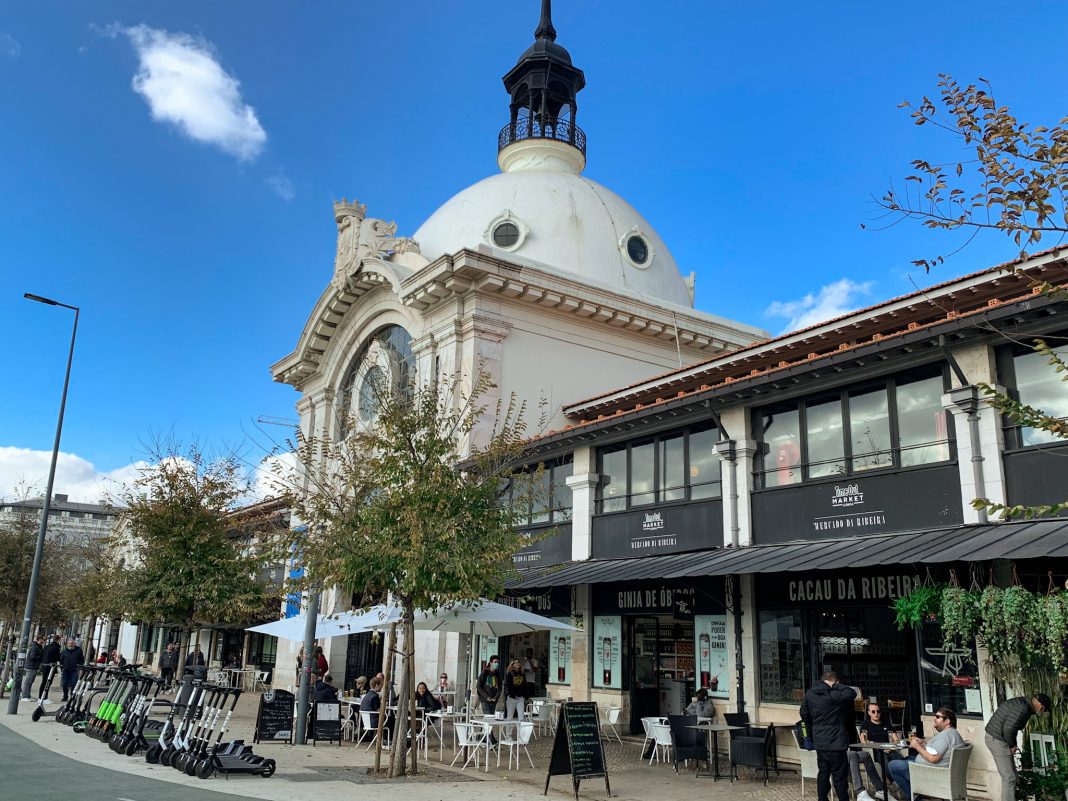
The Bairro Alto at night
If you only have 2 days in Lisbon, you could save visiting the Bairro Alto until the evening for an atmospheric night out.
When it gets dark, the neighbourhood’s streets come alive with throngs of people spilling out of bars and standing on the streets. It’s an excellent spot to grab a bite to eat and drink and experience the unique sounds of Portugal’s traditional music, Fado (or you can pre-book a show here).
One place here that is definitely worth checking out in the evening is the quirky Chinese Pavilion bar (Pavilhao Chines).
This is a bar like no other, with interconnected rooms with large glass cabinets packed full of antiques and military memorabilia. There are a couple of pool tables at the rear.
Head out to Belem
The final place in Lisbon that you must definitely fit into your short break is Belem, one of the city’s most historically significant areas. The famous Portuguese navigator Vasco da Gama set off from here on his explorations.
You can get to Belem via a short bus, tram or train journey. On the way, you will pass through Alcantara, Lisbon’s former port, which has been transformed into a thriving entertainment hub complete with boutiques, bars, clubs and restaurants and even a few museums. It’s ideal for visiting both during the day and in the evening.
The Mosteiro dos Jeronimos monastery
The most striking building in Belem, is the monastery (Mosteiro dos Jeronimos). This is a UNESCO World Heritage site, and it’s easy to see why it was awarded this status.
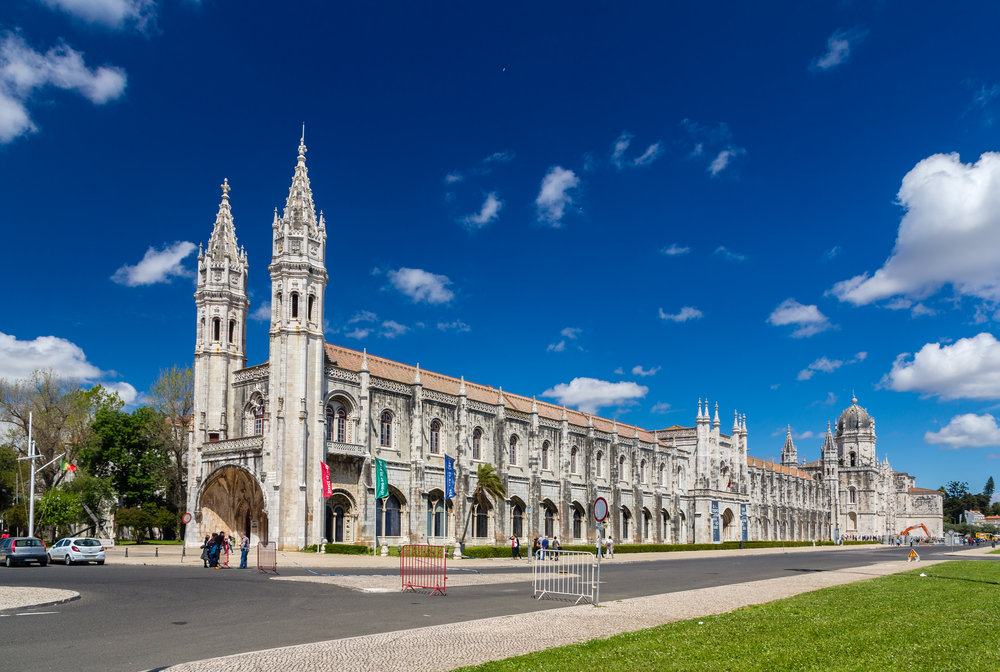
Intricately designed, this elegant building took seven decades to complete and is an example of the Portuguese Manueline style. The monastery is top of the list on a trip to Belem and its beautiful cloisters are one of the many highlights.
The Monument of the Discoveries
Cross over the road and walk through the gardens to the waterfront, and you’ll find the impressive Monument of the Discoveries that celebrates Prince Henry the Navigator.
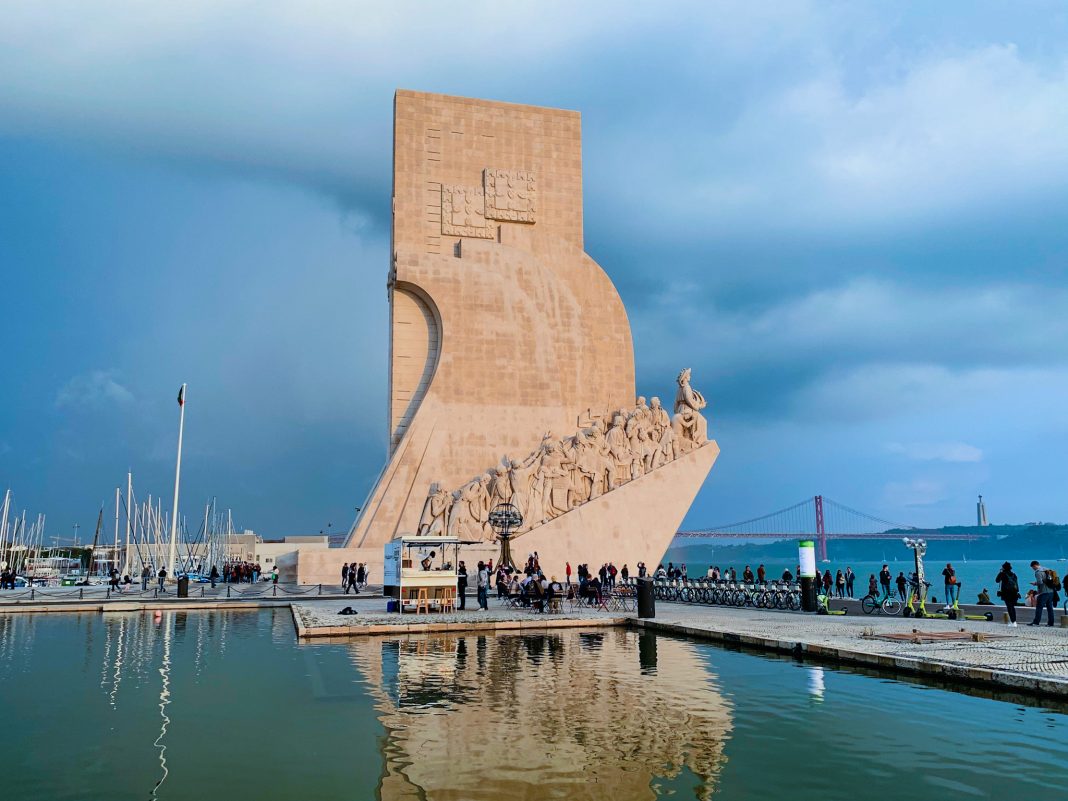
From certain angles you can photo this striking monument with the city’s suspension bridge and Christ statute in the background.
Further along the waterfront in the direction of the Atlantic Ocean, you’ll find a 16th-century tower (Torre de Belem). This is the site from where Vasco da Gama and other Portuguese explorers set off on their seafaring adventures.
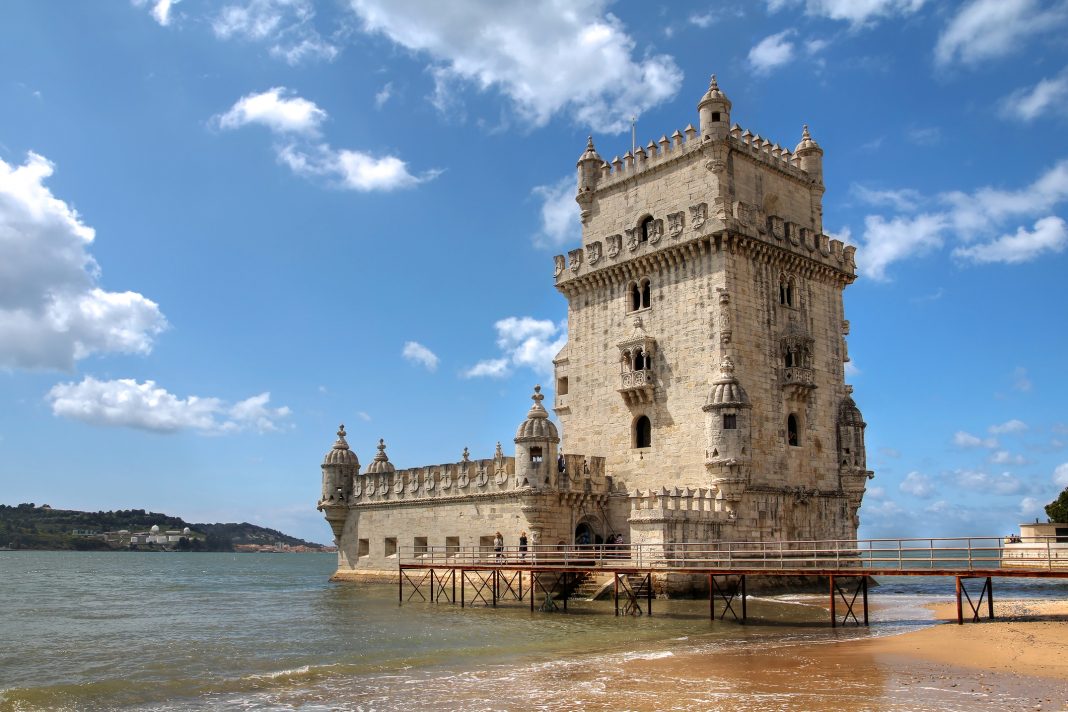
Around the monastery, you’ll find a selection of museums, including a Planetarium, a Maritime Museum, and a Coach Museum. There is also a tropical garden.
Portuguese custard tarts
A visit to Belem would not be complete without popping into the home of the famous Portuguese custard tart, the cavernous and colourfully decorated bakery café Pasteis de Belem.
According to its website, the bakery started making the original custard tarts in 1837, following an ancient recipe created by monks at the nearby monastery.
As the website notes, the secret recipe is recreated every day using only traditional methods, and, as the original, this is the only place where they are called Pasteis de Belem. That’s why all the other custard tarts you find throughout Portugal and overseas are known as Pasteis de Nata.
Make sure you set aside time to grab a table and order these delicious tarts baking hot from the oven with a sprinkle of cinnamon on top.

Even if you can’t try out the secret recipe at Belem’s iconic bakery, you could instead book a class and learn yourself how to cook Portugal’s famous custard tarts.
Click here for more information.
Other things to do in Lisbon
With just 2 days in Lisbon, I’d recommend prioritising the above attractions. However, because there is so much to do in Lisbon, here are a few other highlights for your travel list.
The Parque de Nacoes
This redeveloped neighbourhood was the site of Expo 98 and features some spectacular attractions.
Easy to reach from the centre of Lisbon by metro, the former exhibition grounds include a massive indoor aquarium and a cable car ride that you won’t want to miss. You will also find a shopping centre and excellent restaurants.
Cascais and the seaside
Some visitors may be surprised to discover how close Lisbon is to the Atlantic coast and how quick and easy it is to catch a train from the city centre to the seaside.
If you fancy a break from downtown Lisbon and have time, catch a train from Cais do Sodre train station to Cascais, a journey that takes about 40 minutes.
One hidden treasure is the scenic coastal walk you can take from Sao Joao Estoril to Cascais.
Get off at Sao Joao train station (a few stops before Cascais) and ask for directions to the steep staircase that takes you down to the coast pathway. Breathe in the sea air and soak up the fabulous views as you walk to Cascais.
You can stop off at cafes and eateries along the way for refreshments and toilet breaks. Estoril, famous for its casino, has some attractive beaches.
Cascais is a small coastal town with a pretty harbour and a good selection of pubs, bars and restaurants, so it’s worth spending a bit of time exploring it once you arrive.
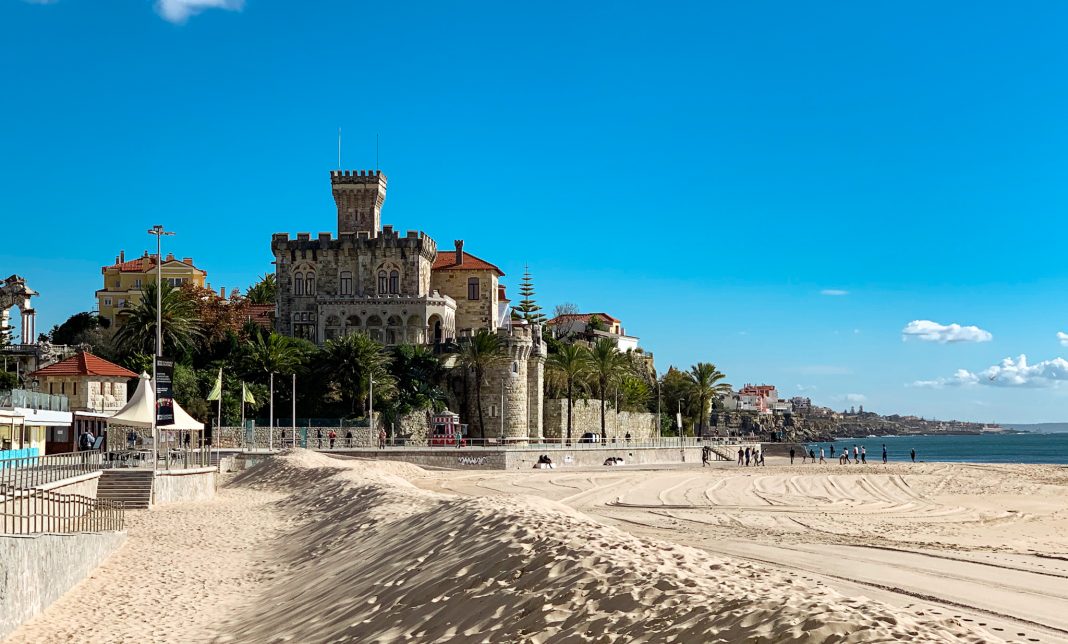
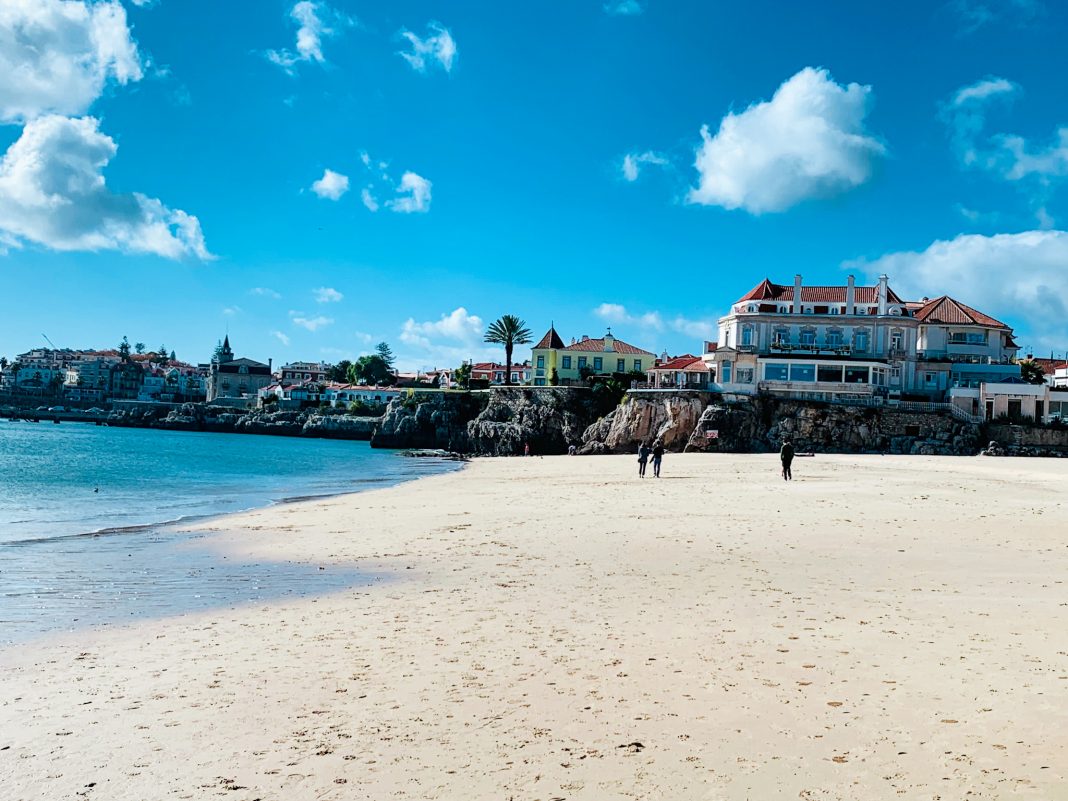
Go to Sintra
Rossio train station, to the northwest of the main square, Praca Dom Pedro IV, is an important transport hub servicing trains to the historic Sintra. This is a recommended day trip from Lisbon (the journey time takes about 40 minutes).
A World Heritage Site, Sintra is like an oasis. Lush and green, this striking town offers a number of must-see attractions. You won’t have time to see them all, so you’ll need to do some forward planning.
Top sights include the Palacio Nacional de Sintra in the town’s centre and two mountain top landmarks – the Moorish Castle (Castelo dos Mouros) and the colourful, fairy-tale Palacio Nacional da Pena (Pena Palace).
See my separate post on a day trip to the Pena Palace.
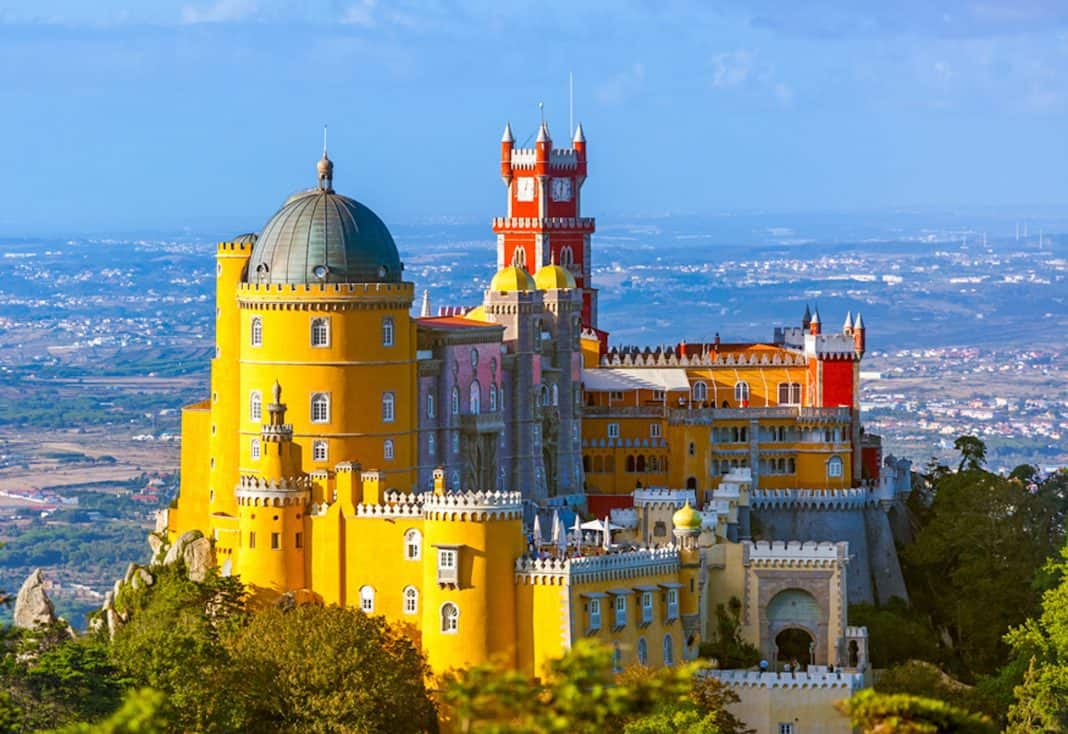
If you have time, you should also consider visiting the Quinta de Monserrate, a 19th-century villa and Quinta da Regaleira.
There are also trips that combine a trip out to Cascais and Sintra.
Tagus River Cruises and Boat Tours
Lisbon is one of Europe’s most scenic and atmospheric cities, especially when viewed from the River Tagus which separates Lisbon in the north from Almada in the south.
Tourists can book river cruises and boat tours, and this is an excellent way to enjoy the city’s fabulous skyline, especially as the evening sun sets.
Click here for a selection of boat trips to choose from.
Cacilhas and the Christ statue in Almada
You probably won’t have time for this with just 2 days in Lisbon, but if you’re staying longer, catching the public ferry over to Cacilhas on the south side of the River Tagus is worth considering. You can catch a boat from the ferry terminal next to Cais do Sodre train station.
After embarking, you can walk along the quayside beneath the suspension bridge. This offers great views of Lisbon’s skyline. There are some excellent seafood restaurants in Cacilhas, the ferry port in Almada.
You may also want to consider taking a taxi up to the Christ statue. When the visibility is good, you’ll have amazing views over Lisbon and the suspension bridge.
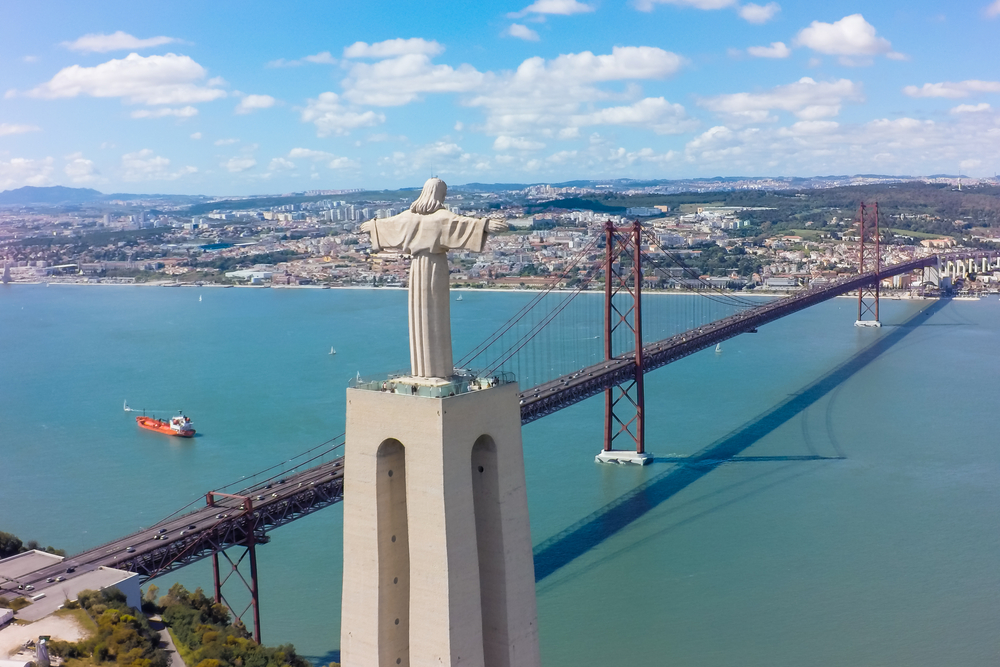
The best time to visit Lisbon
Lisbon is blessed with decent weather year-round, but it can get very hot and crowded during the summer months; this is reflected in accommodation costs.
November through to February can also be susceptible to rain. March to May and September to October are arguably the best times to visit Lisbon, although if you stay outside of these months, you will always find plenty to see and do.
June is a special time to visit Lisbon. This is when the city’s neighbourhoods come alive with the smell of grilled sardines on the streets as the Portuguese celebrate the month-long ‘Popular Saints’ festival.
Christmas is another lovely time of year. The streets are filled with decorations and lights, especially in Praca Dom Pedro IV which has a Christmas market.
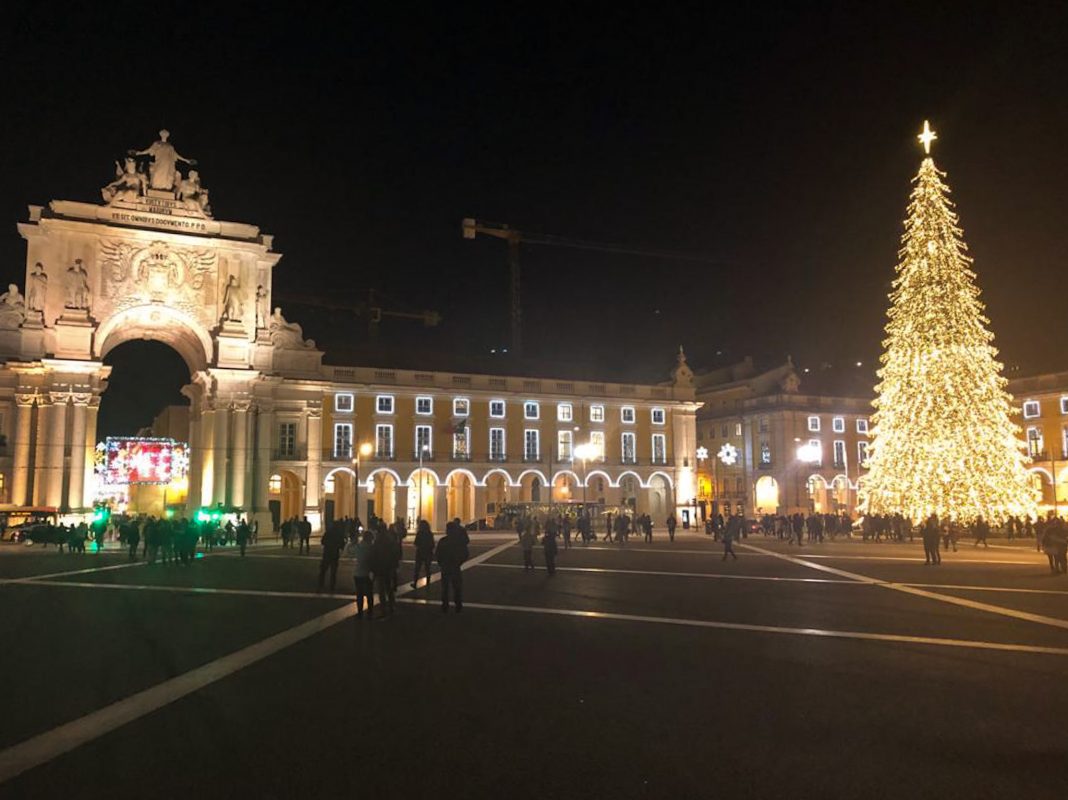
Best location to stay in Lisbon
Finding the best place to stay for 2 days in Lisbon presents a challenge as there are so many amazing neighbourhoods to choose from.
However, to make the most of your short time in Lisbon and to enable you to visit the sights highlighted in this blog, the best places to book accommodation are around the Avenida de Liberdade, in the Baixa, the Bairro Alto, Chiado and Belem.
How to get around Lisbon
Lisbon’s metro system services many, but not all, of the main sites highlighted.
There is also an extensive bus network that provides greater coverage of the city centre. The modern E15 tram is also perfect for travelling from Praca do Comercio to Belem, and vintage tram routes offer an unrivalled and unforgettable experience.
Bear in mind that the city is built on seven hills, and in some cases, these can be very steep. To reach certain neighbourhoods, the old trams and funiculars are ideal for getting around and are part of what makes Lisbon special.
Depending on the journey and your budget, taxis can also be a convenient way to get from one neighbourhood to the next.
If you plan to use public transport extensively, the Lisbon Card is highly recommended and good value for money.
You can buy passes for 24, 48 and 72 hour periods. These give umlimited travel on the city’s trams, buses, metro and cable car. It can also be used on certain trains.
You also get free entry to a large number of museums and sights in the city, some of which have been covered in this blog post.
You can buy the Lisbon card here.
Like other major cities, Lisbon has a hop on/hop off bus route. This is a good choice for people who are on a strict time budget or who might struggle with Lisbon’s steep hills. If you do this, try to link the stops with the vintage tram and funicular rides because this will really enhance your Lisbon experience.
For the more agile and ambitious visitors, there are also walking tours and bike tours.
Lisbon airport to the city centre
There was a time when you had to catch a bus or a taxi from Lisbon airport to the downtown area, but the metro line has now been extended to Humberto Delgado Airport.
This makes the cost of a journey to downtown Lisbon much cheaper. The metro journey is about 30 minutes to Rossio station.
However, if you are staying centrally, nothing beats the taxi journey. This gives you good views of the city when you arrive, particularly as you enter the Rotunda and drive down Avenida de Liberdade to the Baixa.
As the metro doesn’t cover the entire city and since central Lisbon is very hilly, a taxi or a private shuttle may be more practical.
You can book a private airport transfer here.
Other ideas for short European breaks
I hope this has given you some useful information for your 2 days in Lisbon. You may also be interested in other ideas for short European breaks, including:
Enjoy! x

